If you live in or near Los Angeles, and you appreciate the night skies, then you gotta get outta town. WAY outta town. An hour’s drive into the mountains or desert will be a huge improvement, and you’ll be afforded a good look at the Milky Way. However, if you desire truly remarkable, inky-black skies with virtually no light pollution, then you need to keep driving. An hour and a half—-keep driving—-Lancaster and Victorville and L.A. are still too close. Two hours—two and a half hours—keep going. There are still a bunch of nuisance small towns around, and I hope you aren’t getting too close to Las Vegas. Three hours, four hours…now we are talking! There is a region in and around Death Valley, California, that is privy to some of the darkest night skies in the country. A drive east from Owens Valley and into the northern portions of Death Valley National Park will put the night-sky observer some thirty, forty, fifty miles from the nearest small town, and 150 to 200 miles from the large cities. In addition, many decent roads climb above 6000 feet in elevation. The air is dry and the skies are frequently cloud-free. Astronomers love this region!
Brian and Nancy Morganti timed their trip to the California desert around the new moon in early March, in order to experience the dark night skies here. They live close to the light pollution of Reading and Philadelphia, Pennsylvania. I teamed up with them on several days during this week in March, and each night we were treated to an excellent look at the heavens. It was also, coincidentally, the time of the year when the Zodiacal Light was most easily observed after dusk. (As I explain in my write-up for March 8th) the ZL is due to sunlight on dust particles along the solar plane between the planets. It is generally only visible under the darkest of conditions, with negligible-to-zero light interference from cities or the moon. Brian noted the ZL on our first night out in the southern part of Death Valley, and we put our cameras to work! It should be noted that these images were taken with a Canon 5D Mark II camera with a 16-35mm zoom lens set at an aperture of F2.8. ISO settings of about 1600 to 4000 worked best, and exposure times varied from about 15 to 30 seconds in length. In many cases, the exposure was jacked up a stop or two in the image software.
This entry will contain images of the Zodiacal Light on four nights. The first set is from March 8, and these were taken from a spot along Highway 178 in southern Death Valley, between Jubilee Pass and Ashford Mill (and probably closer to Ashford Mill). The elevation was about 300 feet above sea level. The nearest town was dinky Shoshone, about 25 miles to the east, and our cameras could pick up the glow from Las Vegas, some 90 miles to the east (image 1679). In addition to the large lenticular clouds above Death Valley, you should be able to spot the Andromeda Galaxy, the Pleiades, Orion, and Sirius in one or more of the images. We even observed a few lightning flashes to the very distant north, but these do not show in the photos!
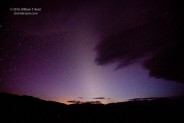
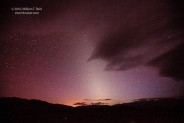
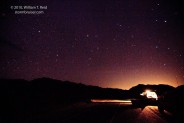

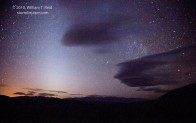
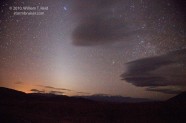
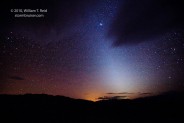
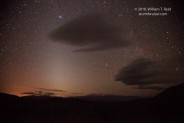
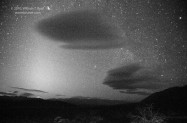
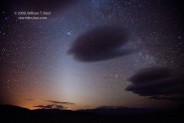
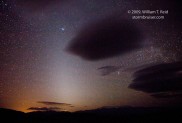
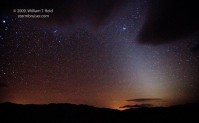
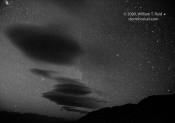
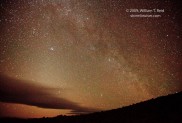
On March 12 the three of us were treated to a great display of lenticular clouds shortly after sunset near the Sierra Nevada and Owens Valley. We were not too far north of Darwin, along 190, on a plateau between the Panamint Valley and Owens Valley. With Zodiacal Light photography in mind, we zeroed in on the Owens Lake area, just 15 minutes to our west. A good view to the west was desirable, so we headed to Keeler and then motored up the dirt road to Cerro Gordo a couple of miles. We must have set up at an elevation near 5000 feet, or about 1000 feet above Keeler and the dry/almost-dry lake. It was indeed extremely dark! It was nearly impossible to see where we were stepping, and the ZL was very obvious to the naked eye! Some ACSL (altocumulus standing lenticular) clouds remained, but enough ZL was visible to make photography more than worthwhile.
The following day, March 13, we found ourselves climbing out of the south end of Saline Valley at dusk. This had the potential to be a fabulous ZL viewing night, as skies were clear, we would soon be in that Joshua Tree forest at an elevation over 5000 feet, and this was a region with very dark skies! We found a nice open flat area along Saline Valley Road near Lees Flat, and set up the cameras and tripods. It was later in the evening compared to the previous couple of nights when we observed the ZL, and I suspect that it was a little past the prime viewing time for it. Nonetheless, the Zodiacal Light was still quite visible low in the western sky, and the skies were about as black and star-filled as I had ever seen! There was one issue, however — it was cold and windy! I think the temperature was in the low 30s, and wind was 10-20 mph. Brian and I spent about 30 minutes outside and then wrapped things up and headed back to Lone Pine.
For the images below, besides bringing the brightness up in Photoshop, I somewhat liberally adjusted the tint and “temperature” in order to produce what may or may not be considered a more appealing picture. In real life, the ZL is a fairly faint whitish glow with little or no color to it. These 30-second exposures and the image software reveal quite a bit of color to the night sky!
March 14th was our final night together to shoot the night sky and the Zodiacal Light. We were in the Eureka Valley at the dunes at sunset. There are zero settlements in this desert basin, and only a couple of very tiny towns are within about 60 miles. The night sky would be extremely dark here, but there were some very thin cirrus clouds around. We drove back from the dunes to Death Valley Road, and then went east (upslope) a few miles towards the Last Chance Mountains. There was a nice flat area by the road here with a great view to the west.
My camera was piggybacked onto my Celestron 8-inch scope, and I shot several images of Orion and vicinity. It should be easy to make out Orion and Canis Major in the first shot below, taken with a lot of lingering dusk light. The camera is aimed at Cassiopeia next (2228), and the next two (2231, 2233) and the last one (2249) are back to Orion. With the camera piggybacked, I was able to track the sky and take exposures of several minutes. The long exposures, coupled with the very dark skies, allowed some of the very faint nebulosity around Orion to be picked up. There is an “arc” of nebulosity called “Barnard’s Loop”, which is quite difficult to photograph, at least conventionally. Barnard’s Loop is faintly apparent on these three images as a purplish curve around the left side of Orion’s belt and sword.
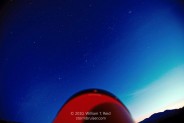

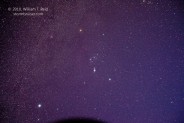
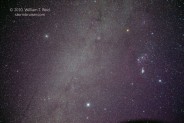
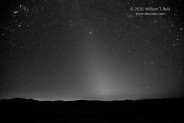
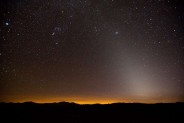

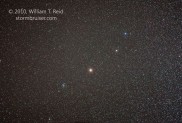

There are three images here of the Zodiacal Light. The black and white image is pretty close to what the ZL looks like to the human eye, in person. The second-to-last image is centered close to Mars, with the Beehive star cluster (M44) in Cancer nearby.

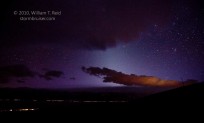
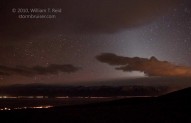
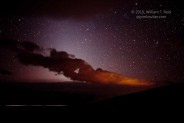
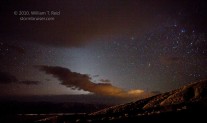
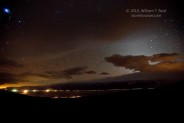
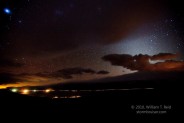
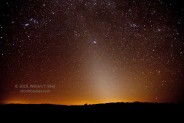
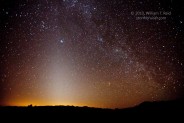
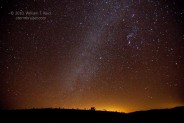
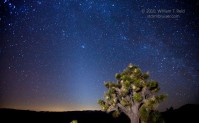
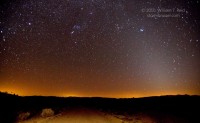
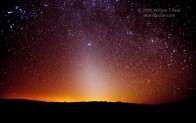
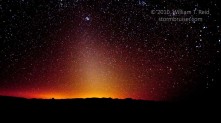
Leave a Reply
You must be logged in to post a comment.